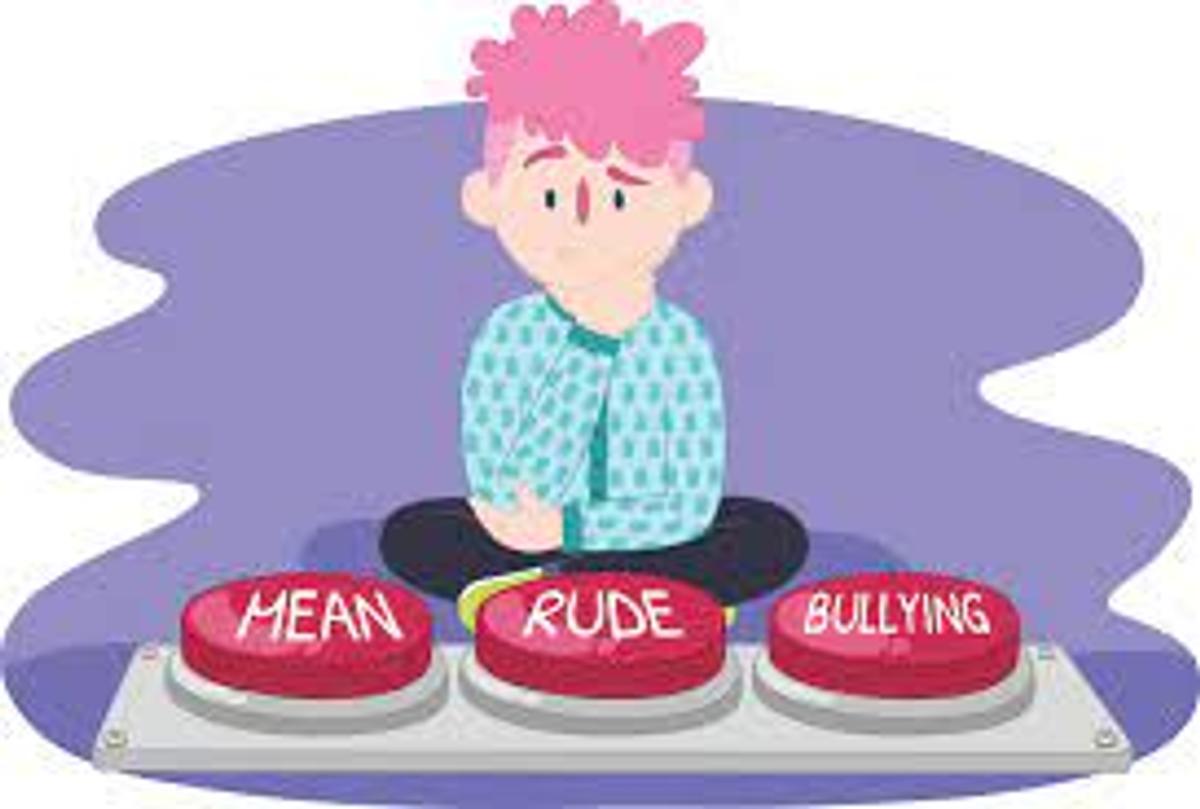Student Welfare and Wellbeing News
School Wide Positive Behaviour Support and Respective Relationships News

Student Welfare and Wellbeing News
School Wide Positive Behaviour Support and Respective Relationships News


There is a difference between bullying, being rude or mean. While both rudeness and mean behavior require correction, they are “different from bullying in important ways that should be understood and differentiated when it comes to intervention.” By talking to your child about the differences, you can better identify the offending behavior and take appropriate action. In all instances, please contact your classroom teacher.
Rude is inadvertently saying or doing something that hurts someone else. In children this takes the form of social errors like “burping in someone's face, jumping ahead in line, bragging about achieving the highest grade or even throwing a crushed up pile of leaves in someone's face.” The critical factor? “Incidents of rudeness are usually spontaneous, unplanned inconsideration, based on thoughtlessness, poor manners or narcissism, but not meant to actually hurt someone.”
Being mean involves “purposefully saying or doing something to hurt someone once (or maybe twice).” Unlike unthinking rudeness, “mean behavior very much aims to hurt or depreciate someone. Very often, mean behavior in kids is motivated by angry feelings and/or the misguided goal of propping themselves up in comparison to the person they are putting down.”
Bullying is repeated aggressive behavior that can be physical, verbal, or relational, take place in-person or online, at school, work, in the neighborhood, or even at home. Bullies are often relentless, bullying over and over again for long periods of time. You may live in constant fear of where and when the bully will strike next, what they'll do, and how far they'll go.
Unless you’ve directly experienced bullying, you may not realize just how devastating it can be, especially to a child or teenager.
Bullying should never be tolerated. Whether you’re the one being bullied, or you’re a teacher or parent who thinks a child is being bullied or engaging in bullying behavior, there are steps you can take to deal with the problem and put a stop to the damaging effects of bullying.
Physical bullying isn't limited to hitting, kicking, or pushing you (or even just threatening to do so). It can also include stealing, hiding, or ruining your things and hazing, harassment, humiliation, or making you do things you don't want to do.
Verbal bullying includes name-calling, teasing, taunting, insulting, or otherwise verbally abusing you.
Relationship bullying includes refusing to talk to you, excluding you from groups or activities, spreading lies or rumors about you, or forcing you into uncomfortable or humiliating situations.
Cyberbullying, unlike traditional bullying, doesn’t require face-to-face contact and isn’t limited to just a handful of witnesses at a time. Cyberbullying can occur anywhere, at any time and the methods used to cyberbully can range from sending threatening or taunting messages via email, text, social media, or IM to sexting, posting revenge porn, or stealing your online identity to hurt and humiliate you.
Bullying at work is far more widespread than you may imagine. Far from being limited to kids and teens, bullying can frequently occur in the workplace, whether you're in an office, on a factory floor, or even working remotely. Bullying at work can add stress to any job and leave you feeling angry, embarrassed, and vulnerable.
No matter how much pain it causes, kids are often reluctant to tell parents or teachers about bullying because they feel a sense of shame from being victimized. Bullies also tend to be adept at hiding their behavior from adults, so if a child is being bullied it may not be obvious to a parent or teacher. Therefore, it's important to recognize the warning signs of bullying.
Your child may be the victim of bullying if they:
When it comes to trying to stop bullying behavior in kids and teens, there are steps that parents and teachers can take.
Talk to kids about bullying. Just talking about the problem can be a huge stress reliever for someone who’s being bullied. Be supportive and listen to a child’s feelings without judgment, criticism, or blame.
Remove the bait. If your child is targeted by a bully for his or her lunch money, phone, or iPod, for example, suggest your child packs a lunch for school and leaves the gadgets at home.
Find help for a child who’s afraid of a bully. Make sure other teachers, coaches, and counselors know the child is being bullied. No child should have to handle bullying alone.
Help the bullied child avoid isolation. Kids with friends are better equipped to handle bullying. Find ways to increase their social circle, via youth or religious groups or clubs, for example.
Kids Helpline is a 24-hour, seven day a week counselling service for Australian young people aged between 5 and 25 years. Kids Helpline have talked to more than 8 million kids over 28 years about all sorts of problems. Young people can access Kids Helpline by calling 1800 551 800 or visiting their website.
Talking to a Parentline counsellor can help you navigate difficult parenting dilemmas. You don’t have to be in crisis to reach out for help. Visit their website.
The Office of the Children’s eSafety Commissioner deals with cyber bullying of children, image-based abuse, and illegal and harmful content online. You can report concerns here, and learn more about how to have safer, more positive experiences online.
Dolly’s Dream Parent Hub pulls together the most trusted information about online safety and bullying, to help parents have conversations with kids about bullying, communication, porn, violence, social media, sharing, and more.